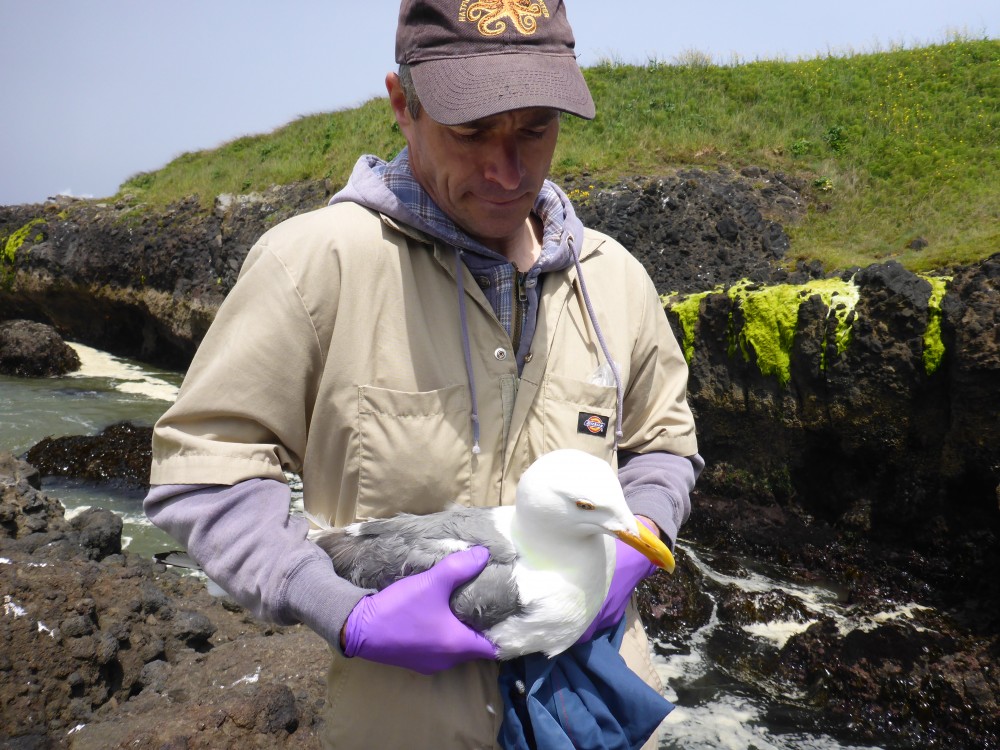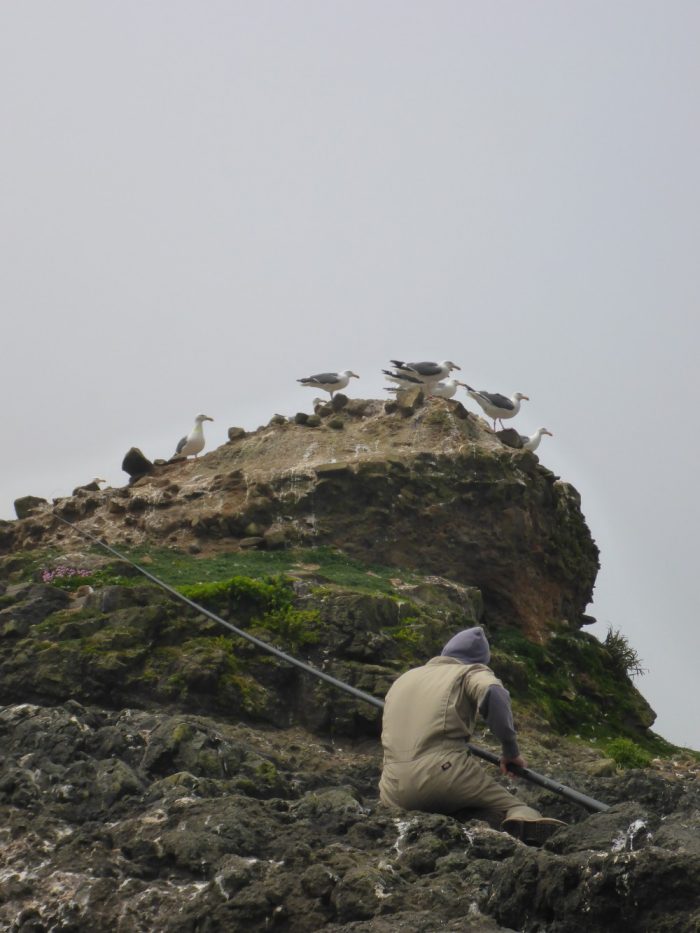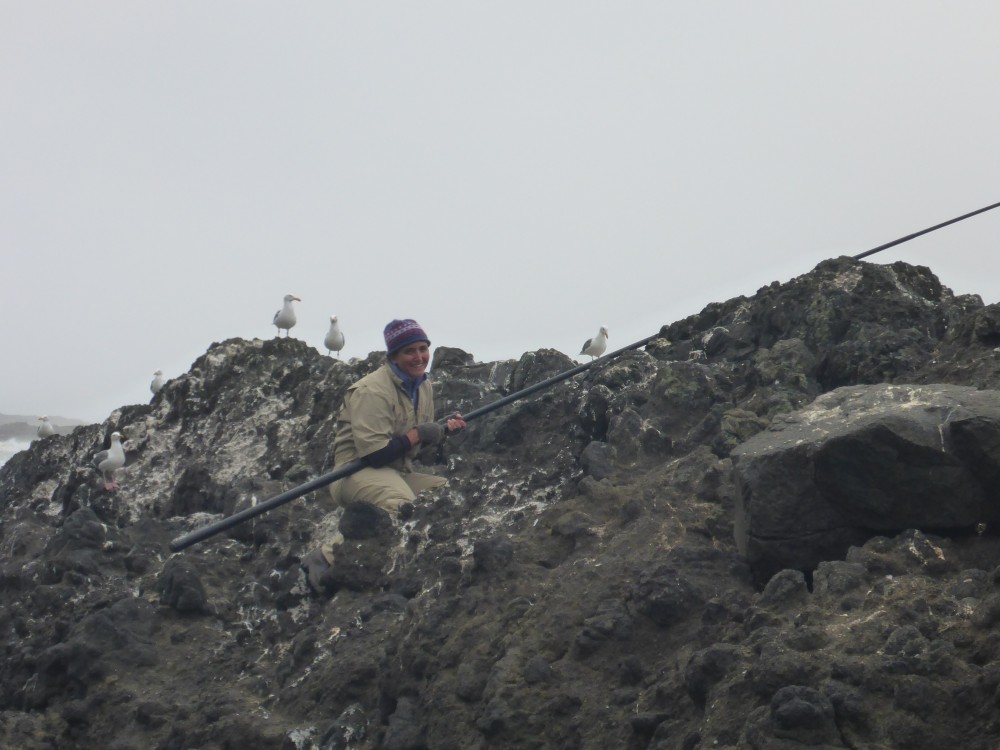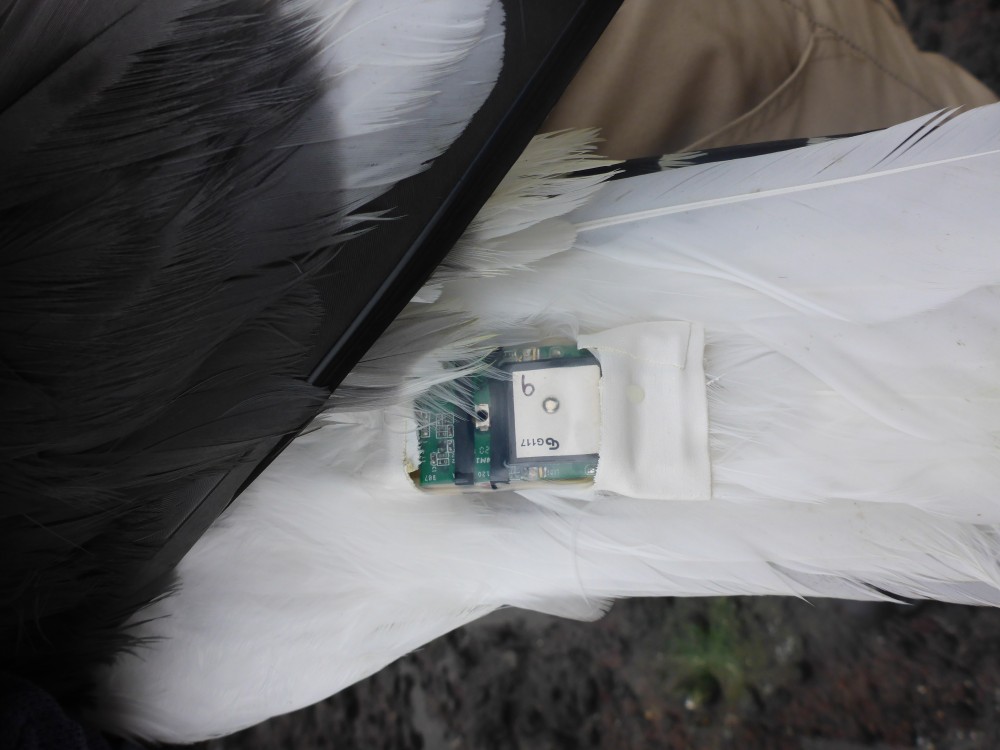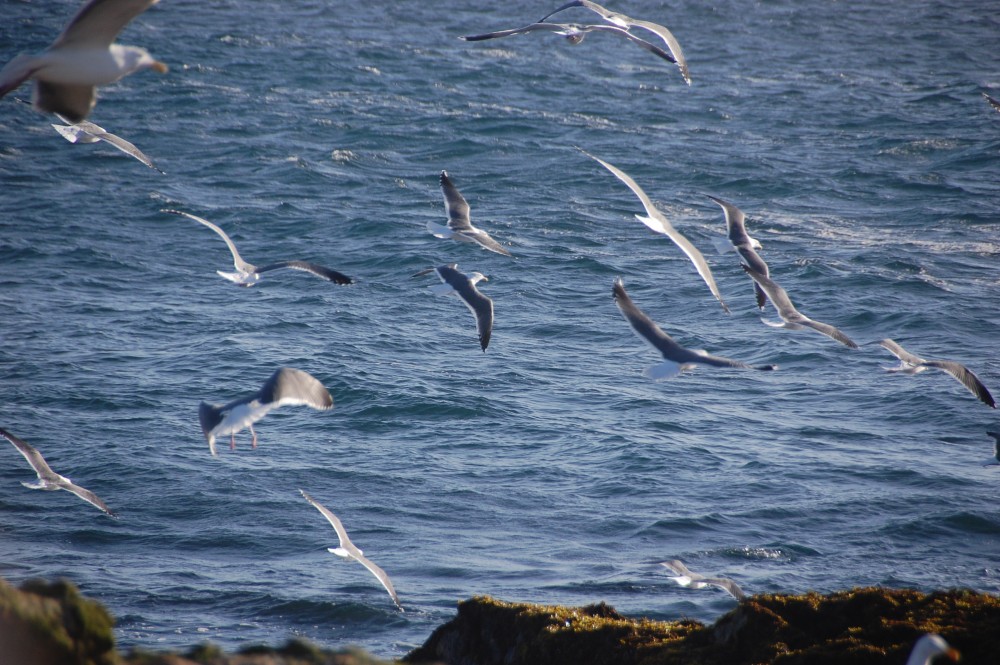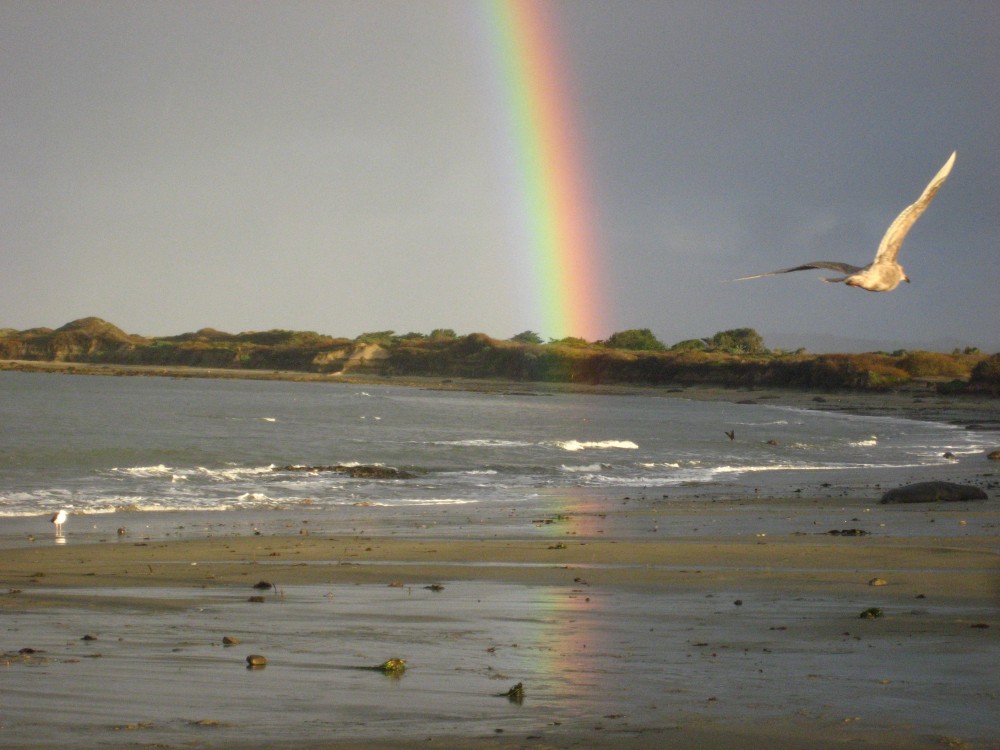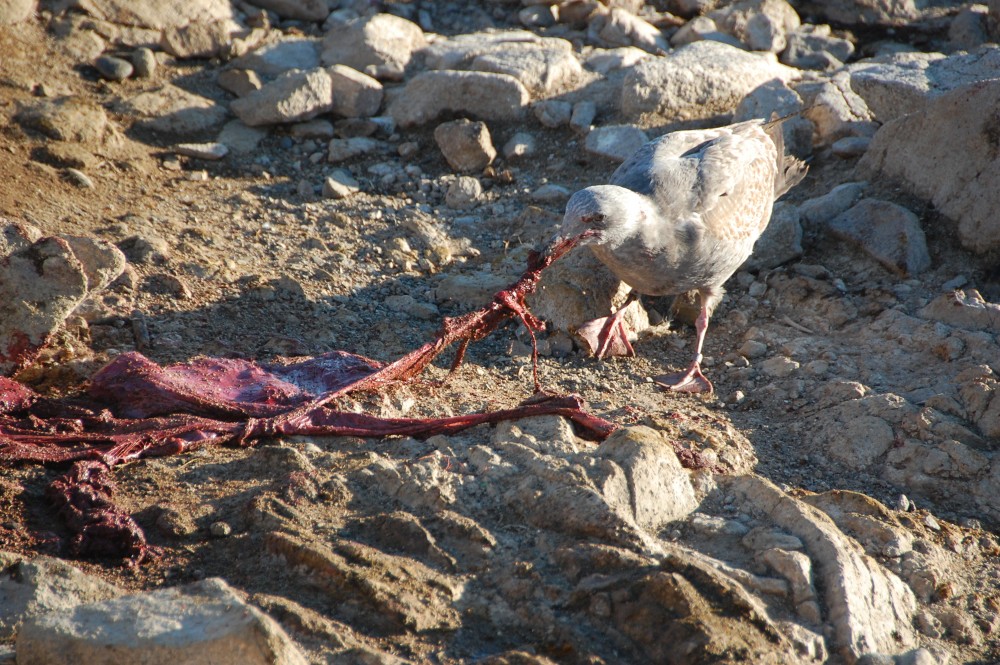Chicken wings, toy dinosaurs, Easter eggs, driver’s licenses, ham, broccoli, and toy cars, to name a few things. I’ve even seen a gull try to eat a live, 2 ton elephant seal (and have got the pictures to prove it!).
Recently researchers from the GEMM lab, and the Seabird Oceanography lab (SOL) at Hatfield Marine Science Center, have been collaborating with Dr. Scott Shaffer’s Avian Physiology and Ecology laboratory at San Jose State University to investigate the causes and implications of these strange eating habits.
When they aren’t scavenging off of your plate of French fries, Western gulls (Larus occidentalis) are either foraging for fish and invertebrates out at sea, or visiting the local dump to pick up dinner for the little ones. Unfortunately, during the breeding season dinner at the dump comes with the risk of bringing harmful contaminants and pathogenic microbes back to the colony. In addition to littering colonies with refuse, gulls can serve as potential vectors of disease that may affect other nearby wildlife. Seabird ecologists at OSU and SJSU are using GPS tags in order to better understand how different colonies of Western gulls along the West coast are affected by access to landfills. Over the past month, a handful of gulls at colonies in California and Oregon have been outfitted with these light weight tracking devices. The data gained from these tags will allow researchers to study the foraging ecology and habitat use patterns of these individuals. When the tags are recovered, biological samples such as blood and feathers will be collected to determine how these habitat-use patterns (and potentially, trips to the local landfill) are affecting these birds in terms of microflora and contaminant loads.
Last week I (Erin Pickett) assisted the GEMM and SOL labs in capturing a few of these birds in order to outfit them with tags. The local field site is just south of Yachats on a guano-covered rock that a small colony of Western gulls call home. Like all great fieldwork and adventures, our day began at 4:00 am (and it was raining!). About an hour later we arrived at our field site, where we assessed the ocean conditions and determined that the treacherous crossing from the mainland to the colony was passable (it was low tide). There is some great GoPro footage of a crossing the week before that consisted mostly of a current rushing over rocks and the occasional flash of a wetsuit or a yellow dry bag while two hands reached out for something stable to hold onto. When I heard about this I became even more excited about the opportunity to join in on the fun.
We spent our morning focused on two tasks. The first was to recapture the two birds who we had put tags on the previous week. Since the tags have to be small and light-weight, they can only collect data for as long as their battery lasts. However, this is long enough to log a few foraging trips and get a good idea of where the gulls are concentrating their foraging effort. Our second goal was to put tags on eight more birds. We used a combination of capture techniques, including a very long pole with a small noose on the end of it, to recapture one of our birds from last week, along with seven new birds who we deployed new tags on. By the end of the second morning the weather was nice enough to enjoy changing into a wetsuit and jumping into the water for the crossing back to shore. Now we just need to get the rest of our tags back. Wish us luck!
P.S. It’s not often that you purposely put photos of gulls in photo galleries, so I’ve taken this opportunity to find my best shots. These are a couple more of the field sites where our collaborators are working- on Southeast Farallon Island, and Ano Nuevo Island, California
